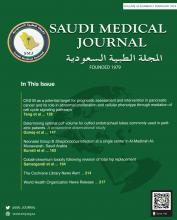Article Figures & Data
Tables
Characteristics n % Gender Woman 28 100 Marital status Married 21 75.0 Single 7 25.0 Educational status Illiterate 6 21.4 Primary school 12 42.9 Middle School 3 10.7 High school 3 10.7 University 4 14.3 Working status Yes 2 7.1 No 26 92.9 Economical situation Bad 5 17.9 Middle 18 64.3 Good 5 17.9 Non-cancerous disease receiving continuous treatment No 18 64.3 There is 10 35.7 Diabetes 5 50.0 Goiter 1 10.0 Pituitary failure 1 10.0 Heart disease 1 10.0 Stomach disease 1 10.0 Hypertension 1 10.0 Treatment time 0-1year 20 71.4 1-5years 6 21.4 5-10years 1 3.6 more than 10 years 1 3.6 Place of treatment process Home alone 3 10.7 Pair at home 18 64.3 With children 6 21.4 Other 1 3.6 Smoking No 22 78.6 Yes 6 21.4 0-1 year 1 25.0 1-5 years 2 50.0 5-10 years 1 25.0 Drinking Alcohol No 28 100 Information on disease and treatment Yes 21 75.0 No 7 25.0 Knowing the side effects of treatment Yes 3 10.7 No 25 89.3 Diagnosis Invasive ductal carcinoma 21 75.0 Invasive lobular carcinoma 3 10.7 Invasive pleomorphic lobular carcinoma 1 3.6 Invasive solid papillary carcinoma 1 3.6 Tubular carcinoma 1 3.6 Matrix-produced lonaplastic carcinoma 1 3.6 Treatment Status Ambulatory 28 100 Stage of the disease Stage 1 9 32.1 Stage 2 16 57.1 Stage 3 3 10.7 Radiotherapy treatment protocol Hypofractionated 28 100 Application of additional treatment non-radiotherapy No 27 96.4 Yes 1 3.6 Psychiatry 1 100 Numeric variables n Min. Max. Average SD. Age 28 35.00 78.00 55.39 13.03 SD: standard deviation
Demographics 1st Week 2nd Week 3rd Week 4th Week n % n % n % n % Swallowing difficulty There is - - 2 7.1 7 25.0 7 25.0 No 28 100 26 92.9 21 75.0 21 75.0 Throat ache There is - - 4 14.3 5 17.9 5 17.9 No 28 100 24 85.7 23 82.1 23 82.1 Cough There is - - 2 7.1 4 14.3 3 10.7 No 28 100 26 92.9 24 85.7 25 89.3 Weakness There is - - 4 14.3 3 10.7 3 10.7 No 28 100 24 85.7 25 89.3 25 89.3 Anorexia There is 1 3.6 3 10.7 4 14.3 4 14.3 No 27 96.4 25 89.3 24 85.7 24 85.7 Toxicity (RTOG scale) Grade 0 - - 25 89.3 16 57.1 14 50.0 Grade 1 28 100 3 10.7 12 42.9 11 39.3 Grade 2 - - - - - - 3 10.7 Presence of tenderness, discomfort, or pain at the treatment site No 27 96.4 19 67.9 6 21.4 6 21.4 Little 1 3.6 8 28.6 17 60.7 15 53.6 Middle - - 1 3.6 5 17.9 7 25.0 Presence of itching in the treatment area No 28 100 23 82.1 9 32.1 6 21.4 Little - - 4 14.3 15 53.6 15 53.6 Middle - - 1 3.6 4 14.3 7 25.0 Presence of burning sensation in the treatment area No 25 89.3 19 67.9 11 39.3 5 17.9 Little 3 10.7 7 25.0 11 39.3 14 50.0 Middle - - 2 7.1 6 21.4 8 28.6 No - - 1 3.6 Little 28 100.0 24 85.7 21 75.0 17 60.7 Middle - - 4 14.3 2 7.1 5 17.9 No - - - - 5 17.9 6 21.4 RTOG: Radiation Oncology/Toxicity grading
- Table 3
- distribution and comparison of participants’ scores from the supportive care needs scale (SCNS-SF34).
Characteristics Pre-test Final test Materiality n Min Max Average Dn Min Max Average SD P-values 0psychological needs 28 24.00 100 68.71 28 32.00 100 82.07 18.42 t=-3.140, p=0.004 Health system and information needs 28 21.82 100 88.77 28 74.55 100 93.77 6.88 Z=-1.706, p=0.088 Physical and daily living needs 28 20.00 100 74.14 28 20.00 100 77.57 22.97 t=-1.090, p=0.285 Patient care and support needs 28 20.00 100 77.29 28 48.00 100 85.86 16.71 t=-2.203, p=0.036 Sexuality and problems 28 20.00 93.33 42.14 28 20.00 100 45.95 23.54 t=-1.057, p=0.300 Supportive maintenance requirements scale (SCNS-SF34) 28 23.53 97.65 74.92 28 56.47 95.88 82.56 11.25 t=-3.434, p=0.002 SD: standard deviation, Min: minimum, Max: maximum






